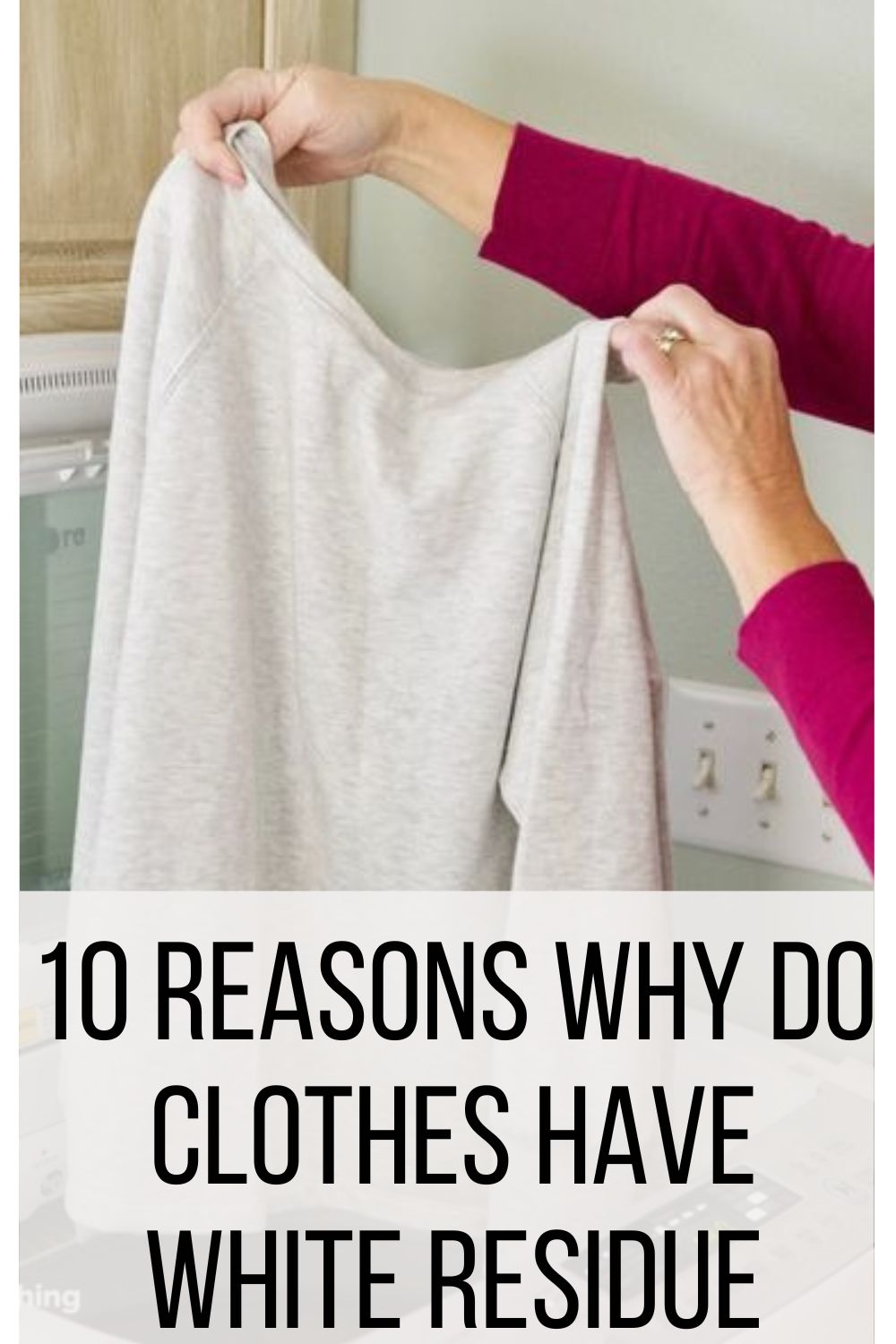
Be it specks or streaks – white residue on freshly washed clothes is a stressful discovery. You can’t just put them in the dryer and be done with the laundry. Instead, you will have to wash the clothes all over again!
But, before you do that, it’s important to know why clothes have white residue after washing. If you don’t know the cause, you can’t prevent it from happening a second time.
So, without further, let’s explore the 10 reasons why clothes have white residue after washing and the steps you can take to prevent it.
Table of Contents
10-Reasons Why Your Clothes Have White Residue After Washing
Most people blame detergent quality for the white residue on washed clothes. However, there are a lot of different reasons that can trigger this problem. These include:
1. Adding Too Much Detergent
People might think that adding more detergent will clean the clothes better. But that’s not always true.
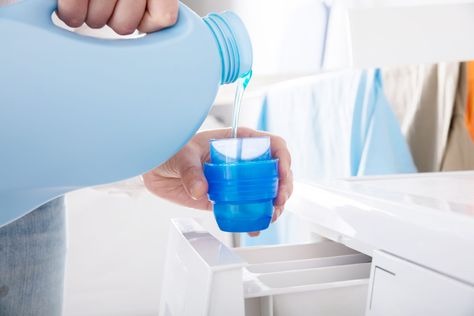
Too much detergent can leave gritty white residue on your clothes. It also causes dark and brightly colored clothes to fade. You will notice that the washer drum is slimy and smelly.
As per cleaning experts, you should add 2 tablespoons of detergent for big loads (weighing up to 12 pounds). If your laundry load is less, you will adjust the detergent amount accordingly.
One more way to determine how much detergent you should add to the load is to look at the detergent packaging. Most brands, like Tide, have a measurement guide printed on the backside of the bottle or box.
2. Using Non-HE Detergent in HE Washer
High-efficiency detergents are specially formulated cleaning products. They create fewer studs to break stains and suspend them in the water. As a result, the dirt isn’t deposited back on the clothes.
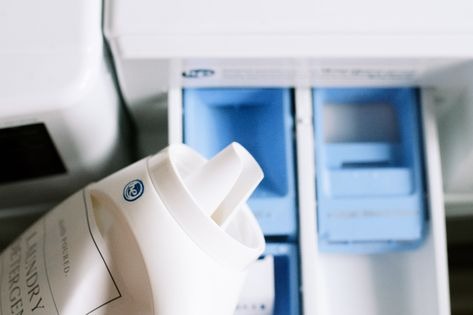
But the main feature that distinguishes a HE detergent from non-HE or traditional detergent is water quantity. High-efficiency detergents work in low water quantities. Your clothes will come out fresh and clean without wasting a lot of water.
With that said, HE detergents cannot be used in regular washing machines and vice versa. You can only use HE detergents in HE washers and regular detergents in regular washers.
If you add a non-HE detergent to a HE washer, there will be too many studs. The machine may increase the wash cycle or the water quantity, which may result in an overflow.
All this has a negative effect on the cleaning performance. Your clothes develop an unpleasant odor, and white residue clumps.
3. Lint Formation
Sometimes, the white residue on the garments looks like fuzz. It’s attached to the fabric and won’t come out easily. Don’t panic because this is completely normal.
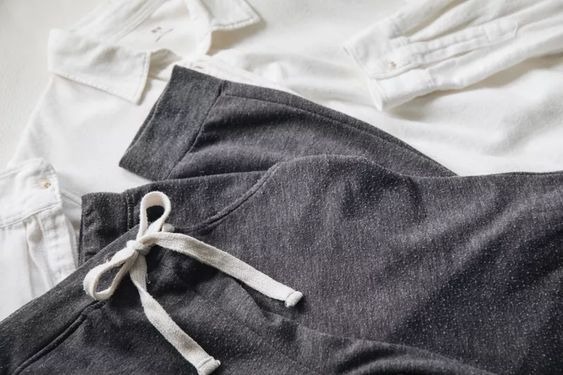
Clothes that are new or made from a certain material produce lint after the first wash. Lint refers to the short and fine cloth fibers that bunch together into small fuzzballs. This typically occurs in natural fabric clothes like cotton, wool, and linen.
You can avoid this by turning the clothes inside out before washing them. Or using dryer sheets in the washer. This will prevent the loose lint from sticking to the washed clothes.
If nothing works, use a lint roller to manually remove all the fuzziness from the clothes. You can also send them to a professional cleaner.
4. Interaction Between Body Soils & Detergent
Body soils refer to the substances that excrete from the human body. These include sweat, body oils, and dead skin cells.
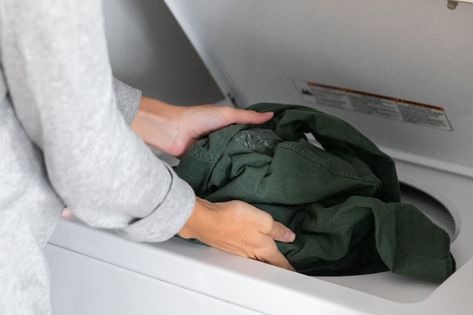
According to an estimate, an average person excretes up to 50 grams of body soil every day. So, no matter how often you shower, the body soil will be present in your clothes
When these body soils come in contact with detergent, a reaction may cause white residue to form on the clothes. This particular white residue is gritty and clumpier. Also, it develops in the wrinkles, creases, and folds of the garment.
This typically occurs when:
- The clothes are heavily soiled.
- You’re using hot or warm wash cycles.
- You’re using gentle wash cycles.
- You’re not using the correct amount of detergent.
You can prevent this by pre-treating heavily soiled clothes. Just soak them in water for 30 minutes, squeeze the excess water out, and then wash them in the machine.
Also, be careful about the water temperature, wash cycle, and detergent amount. Thoughtful laundry can save you a lot of trouble in the end!
5. Adding Too Much Fabric Softener
It’s not only the detergent that can cause white residue on the clothes. If you use fabric softeners, it might as well be the culprit.
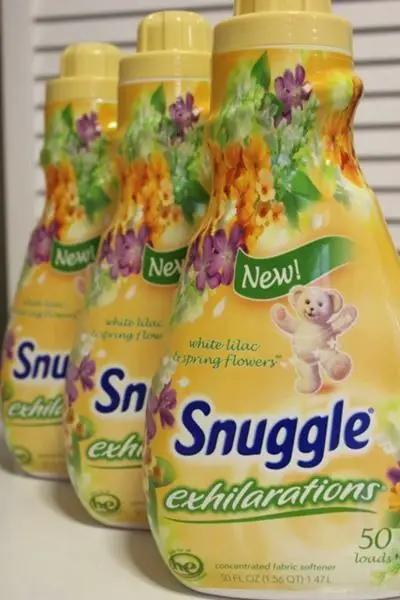
Fabric softeners are cleaning formulas designed to soften the fabric and reduce static. However, you should be a little careful while using them.
To begin, use an appropriate amount of fabric softener. According to experts, you should put in 1 to 2 tablespoons of softener in a full load. Don’t add more than this as it won’t make the load softer.
Also, never pour fabric softener directly on the clothes. These products are colored and may leave heavy stains on the clothes. Instead, use the detergent dispenser to add the softener.
The dispenser will release the product slowly into the machine. This will ensure it’s properly dissolved.
6. Using Hard Water
Since almost 85% of the homes in the US receive hard water, it’s possible that you are washing your clothes in it. What does that mean?
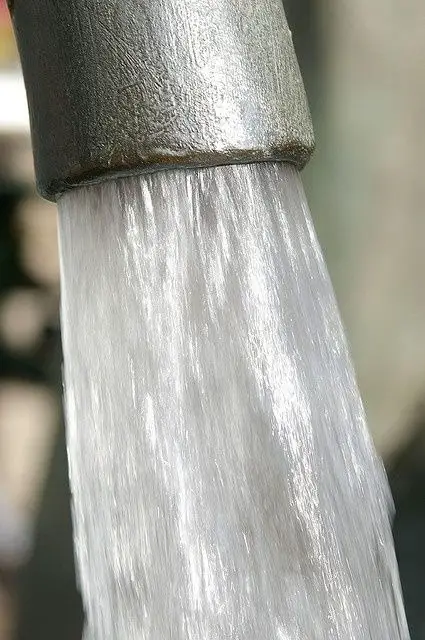
Well, hard water refers to water that has a high mineral content. These mainly include calcium and magnesium.
So, when the detergent comes in contact with these minerals, a reaction occurs. The result of this reaction is white mineral deposits on clothes.
The minerals may also cause the dirt and detergent to get trapped in the cloth fibers. This makes the fabric stiff and smelly. It also reduces the lifespan of the garment.
Hence, it’s always best to use soft water for laundry. And, if you cannot arrange that, choose a hard water detergent. You can also add ½-cup borax to the load. It will soften the water and cut down the stains too.
7. Water Is Too Cold
Undissolved detergent is another reason why white residue forms on the clothes. It typically happens in the northern climatic regions where the water freezes in the colder months.
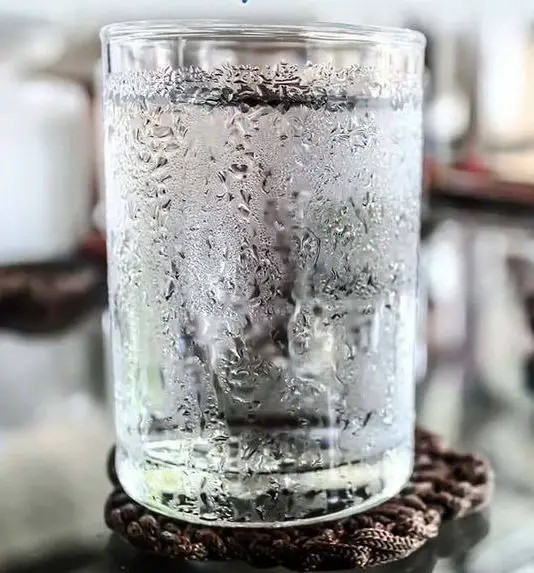
If you live in a similar place, chances are that the water temperature is too low. So, when you add detergent to the washer, it doesn’t dissolve. Instead, it clumps and leaves behind huge white patches on clothes (especially dark-colored ones).
You can get rid of this issue by washing the clothes at a slightly warm temperature. If that’s not possible, make sure to dissolve the detergent in the water first and then add the clothes into the washer.
A good way to handle this issue is to use liquid detergents. Unlike powder, they don’t require much mixing. You can pour it over the clothes and spin the machine. The turn of the motor will automatically dissolve the liquid detergent.
8. Overloading the washer
When doing laundry, you want to wash as many clothes as possible so that you don’t have to do the chore soon. The thought is tempting, and it often leads to us overpacking the washer. But this is a recipe for disaster.
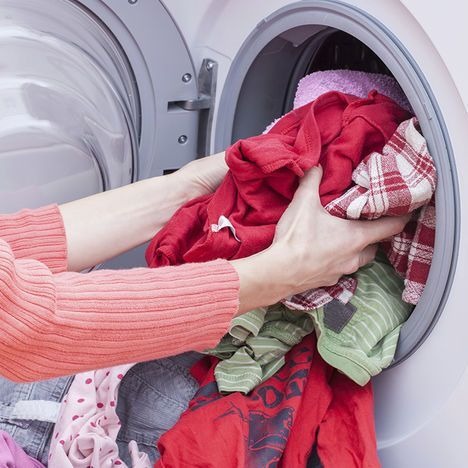
Overloading the washer has three distinct effects:
- Clothes don’t get washed properly.
With so many clothes, the water in the drum becomes insufficient for all the dirt. If you add more water, then the drum will overflow in the middle of a wash cycle. And, if you leave the drum as it is, then all the dirt has little space to be flushed away.
This means the clothes haven’t been washed properly. They might even develop a stale smell after drying. You will have to wash these clothes again.
- White residue develops on the dried clothes.
The lack of sufficient water in the machine also means that the detergent won’t be dissolved properly. The powder or liquid won’t mix up with the load. As a result, when you dry the clothes, there will be gritty white patches on the fabric.
Your washed clothes will also feel sticky in some places. And let’s not forget the weird smell!
- It puts a load on the machine rotator.
It doesn’t matter whether you’re using a top-load washer or front-loading one. Each washer has a rotator inside that causes the clothes to spin in the water and detergent solution. If you put too many clothes in the drum, chances are that there will be too much pressure on the rotator.
You will hear a loud grinding sound, and the clothes will spin around slowly. Doing it a few more times might damage the rotator’s performance and even break it.
9. Unclean Washer
We do laundry regularly, but how many times do we clean the washer? Probably never!
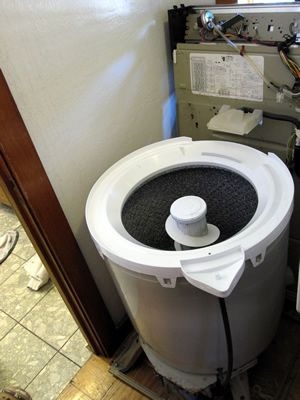
The washer is usually the last thing on our minds. But, believe it or not, an unclean washer can be behind those nasty white patches on your freshly laundered clothes. Since we use the washer to clean dirty fabric, there’s a lot of dirt, residue, and soil deposited on the walls of the drum.
When you put new clothes in it, the previous deposits are flushed out with the force of water. They mix up with the clothes being washed and result in white spots and patches. There’s no other way to combat this issue than you clean your washer regularly.
It’s recommendable to clean a standard washer twice a year. But, if you use a high-efficiency washer, you need to clean it every month. The low volume of water means more deposits!
10. Clogged Water Pump
All washers have a water pump that leads the used water from the drum to the drainage area. If you don’t clean the washer properly, it’s possible for the pump to be clogged with dirt, mineral deposits, and trash.
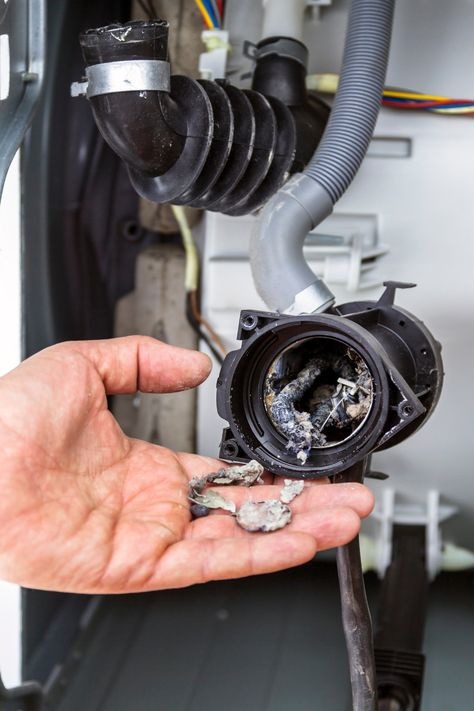
This means that when you drain the water, it will drain very slowly and gradually out of the washer. The dirt and detergent suspended in the water will resettle on the clothes. Hence, the white residue after washing!
So, if that’s the case with your washer, clean the clogged water pump immediately. You might be able to access it through a small door at the bottom or at the back of the machine. If you can’t find it or don’t want to do the task, ask a professional.
How to Clean the White Residue on Clothes?
Typically, rewashing clothes will get rid of the white residue. But if it still persists, the following ways will help remove it:
White Vinegar
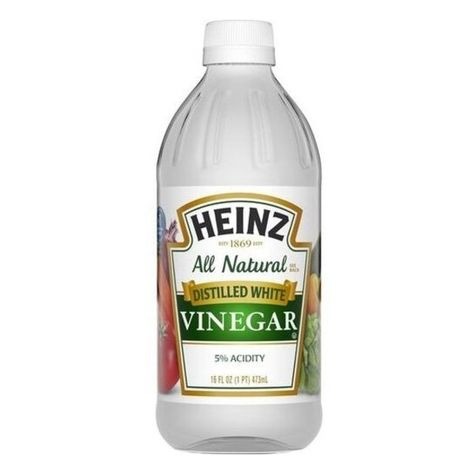
Pour 1 cup of distilled white vinegar into a bucket full of water. Soak your affected clothing in it for 30 minutes. Rinse them using fresh water. You can also add a tablespoon of baking soda to strengthen the vinegar’s performance.
Oxygen-based Bleach
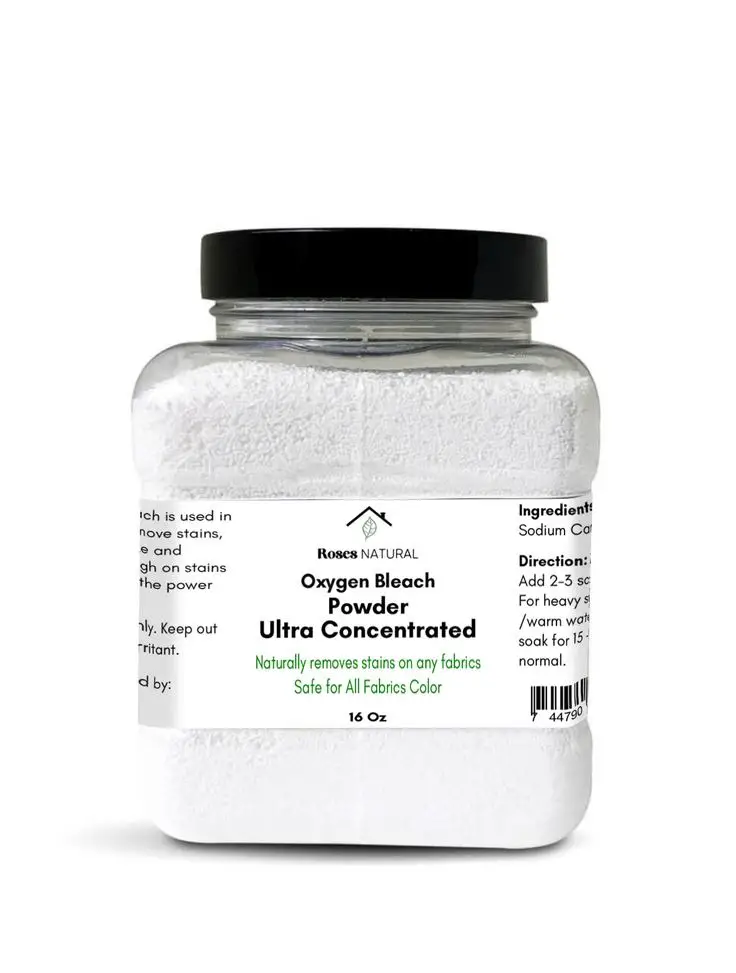
Bleach can weaken the fabric fibers and lighten the colors. So, first, check the manufacturer labels to ensure you can use bleach on the clothes. If all is clear, mix ½ cup of oxygen-based bleach in a bucket full of water.
Soak the affected garments in them for 10 to 15 minutes. Take out the clothes and squeeze the excess. Rewash the clothes with a little detergent only. Use the dryer or hang them under the sunlight to dry.
Please note bleach can be dangerous for human skin. Wear gloves while using it and perform the procedure in a well-ventilated area.
Summary
The white residue on the clothes after washing is the leftover detergent or dirt. This can occur due to 10 different reasons;
- Adding too much detergent
- Using Non-HE detergent in an HE washer
- Lint formation
- Interaction between body soils and detergent
- Adding too much fabric softener
- Using hard water
- Cold water temperature
- Overloading the washer
- Unclean washer
- Clogged water pump
So, if you notice white residue on your clothes after washing, the first thing you should do is investigate the cause. Once that is clear, resolve the problem using our suggestions above. Happy cleaning!